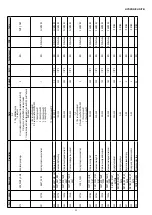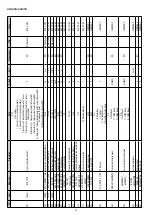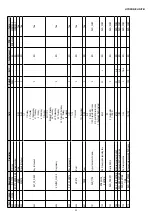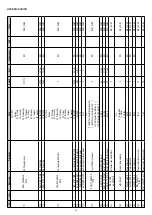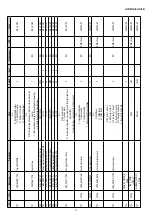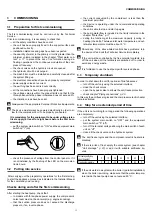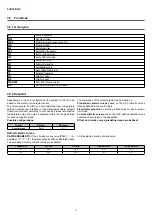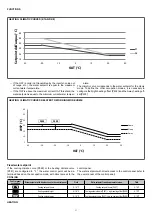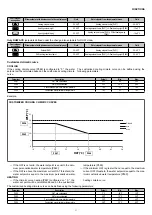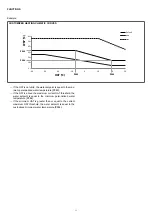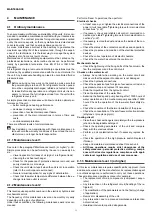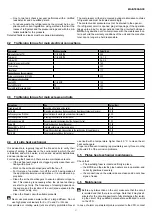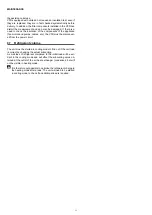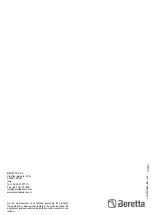
MAINTENANCE
66
4 MAINTENANCE
4.1 Ordinary maintenance
To ensure maximum efficiency and reliability of the units, it is recom
-
mended to establish a maintenance contract with your local service
organization. The contract provides for regular inspections carried
out by the service experts, so that any malfunction is detected and
corrected quickly, and that no serious damage can occur.
A service maintenance contract is the best way to guarantee the
maximum operating life of the equipment and, through the experi-
ence of the technicians, it is the ideal way to manage the system
effectively also from a cost point of view.
Maintenance of air conditioning equipment must be carried out by
professional technicians, while routine checks can be performed
locally by specialized technicians. See EN 378-4 or ISO 5149
standard.
All refrigerant charge, removal and discharge operations must be
carried out by qualified personnel and with the correct material for
the unit. Any inadequate handling can lead to uncontrolled fluid or
pressure losses.
9
Before carrying out any work on the machine, make sure that
the power supply is turned off. If a refrigerant circuit is opened,
it must be completely discharged, refilled and tested to check
for leaks. Before any operation on a refrigerant circuit, it is nec-
essary to remove the full refrigerant load from the unit with a
refrigerant recovery unit.
A simple preventive maintenance will allow to obtain optimal per-
formance of the unit:
— better cooling and heating performance
— decrease in energy consumption
— prevention of accidental component failure
— prevention of the main interventions in terms of time and
costs
— envaironmental protection
There are different levels of unit maintenance.
9
Any deviation or non-compliance with these maintenance cri-
teria will void the warranty conditions of the unit and the man-
ufacturer can no longer be held responsible.
4.1.1 Maintenance level 1
See note in the paragraph "Maintenance level 3 (or higher)"
p. 66.
Simple procedures can be performed by the user on a weekly ba-
sis:
— Visual inspection for traces of oil (sign of a refrigerant leak)
— Cleaning the air heat exchanger
— Check for the presence of protective devices removed, and
poorly closed doors or casings
— Check the unit's alarm report when the unit is not in operation
(refer to the control panel user manual)
— General visual inspection for any signs of deterioration
— Check that the water temperature difference between the ex-
changer inlet and outlet is correct
4.1.2 Maintenance level 2
This level requires specific know-how in the electrical, hydronic and
mechanical sectors.
The frequency of this maintenance level can be monthly or yearly
depending on the type of verification.
Under these conditions, the following maintenance work is recom-
mended.
Perform all level 1 operations, then perform:
Electrical checks
— At least once a year, tighten the electrical connections of the
power circuit (see table "Tightening torque for main electrical
connections"
p. 67).
— If necessary, check and retighten all control / command con-
nections (see table"Tightening torque for main electrical con-
nections"
p. 67).
— If necessary, remove the dust and clean the inside of the con-
trol units.
— Check the status of the contactors, switches and capacitors.
— Check the presence and condition of the electrical protection
devices.
— Check the correct operation of all electric heaters.
— Check that no water has entered the control unit.
Mechanical checks
—
Check the tightening of the fixing bolts of the fan column, the
fan, the compressor and the control unit.
Checks on the water circuit
— Always be careful when working on the water circuit and
make sure that the adjacent condenser is not damaged.
— Check the hydraulic connections.
— Check the expansion tank for signs of excessive corrosion or
gas pressure drop and replace it if necessary.
— Drain the impurities from the hydraulic circuit.
—
Clean the impurities of the water filter.
—
Examine the fixed speed pump bearing after 17500 hours of
water operation and the mechanical pump seal after 15000
hours. Check the operation of the low water flow safety de
-
vice.
— Check the condition of the thermal insulation of the pipes.
— Check the concentration of the anti-freeze protection solution
(ethylene or propylene glycol).
Cooling circuit
— Clean the air heat exchangers completely with a low pressure
jet and a biodegradable detergent.
— Check the operating parameters of the unit and compare
them with the previous values.
— Perform an oil contamination test. If necessary, replace the
oil.
— Check the operation of the high pressure switch. Replace it
if broken.
— Keep and maintain a maintenance sheet for each unit.
—
All these operations require strict observance of the
safety measures: personal protective clothing, compli-
ance with all sector regulations, compliance with appli-
cable local regulations and use of common sense.
4.1.3 Maintenance level 3 (or higher)
At this level, maintenance requires specific skills / approval / tools
and know-how and only the manufacturer, its representative agent
or authorized agent are authorized to carry out these operations.
These maintenance operations concern for example:
— The replacement of main components (compressor, evapo-
rator)
— Any intervention on the refrigerant circuit (handling of the re-
frigerant)
—
The modification of the parameters set in the factory (change
of application)
— Removal or disassembly of the unit
— Any intervention due to a planned maintenance intervention
not carried out
— Qualsiasi intervento coperto dalla garanzia
Содержание 20161618
Страница 1: ...HYDRONICUNITB EN Installer manual...


